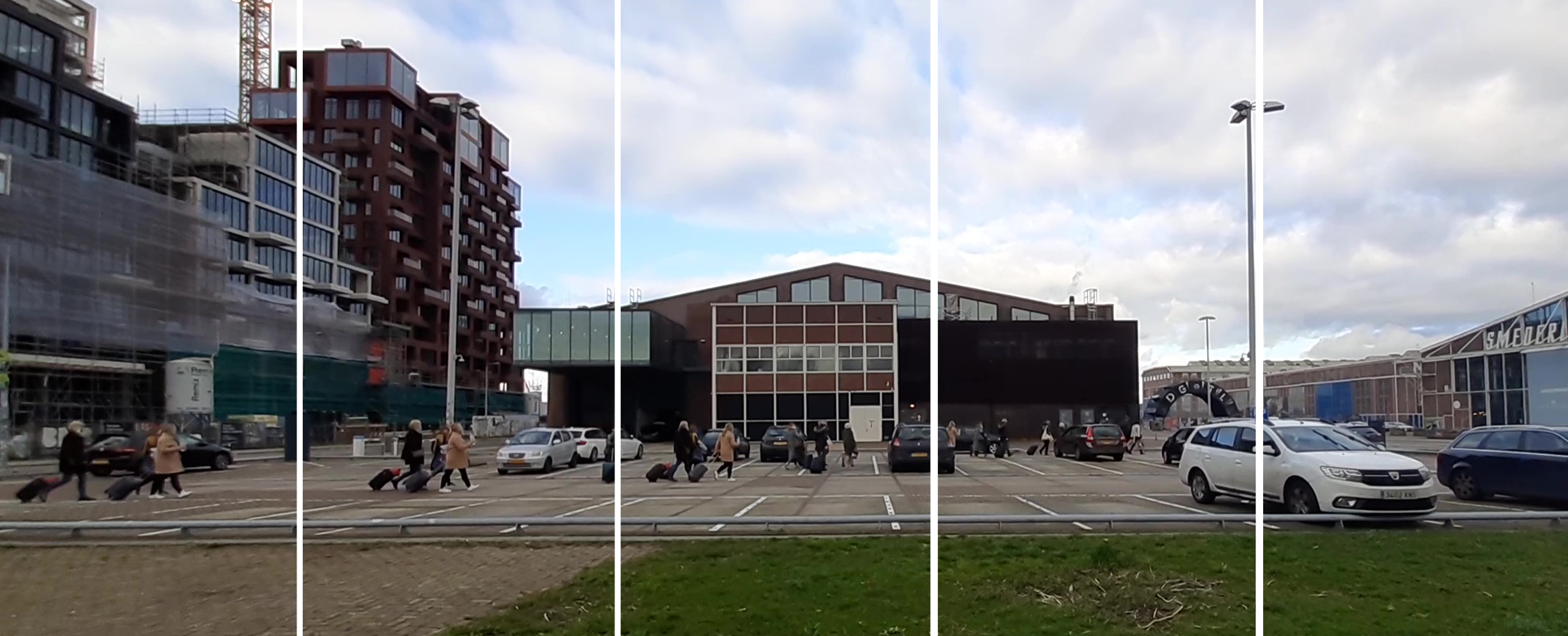Pablo Costa, Lisbon School of Architecture, University of Lisbon, Portugal
Melkweg, Westergas, NDSM and Bijlmerbajes were the study sites chosen for the Short-Term Scientific Mission which took place between 11 and 18 March 2020 in Amsterdam.
Under the title “The Obsolete and the City: Interim reuse as a tool for urban planning”, the initial objective of my Short Term Scientific Mission was to visit and to experience spaces that exemplify interim reuse. This means that at some point the original purpose of these spaces was discontinued and a new function was not clear, so they were adapted for transient or interim use.
Melkweg, originally a milk factory, was used as a concert venue in the 1970s, and remains so. Westergas, a former gas factory, was transformed into a place for temporary events, and is now a park and cultural centre. NDSM wharf, former shipyards, became an artistic squat and remains a cultural cluster and hub for creative industries. Bijlmerbajes, a deactivated prison complex, has been reused as cultural centre, hotel, and even as a boxing school, while the works for the urban regeneration project of the Bajes Kwartier start.
During the STSM period, interviews were conducted with key-actors who participated in these spaces’ temporary developments. Adil Izemrane is director of Movement on the Ground and founder of The Movement Hotel, a pop-up hotel run by refugees in one of the towers of the Bijlmerbajes prison. Simon van Dommelenin is founder of the agency for vacant spaces LOLA, responsible for the organization of temporary uses in Bjilmerbajes. TU Delft Professor Klaske Havik participated as an architect in the development of NDSM. Their testimonies have brought to light several aspects that are often hidden, such as the role of authorities and regulations in relation to the efforts of the initiators of these processes.
Communicating what I observed during the mission, oftentimes presented in “static” formats like books and articles, has posed an interesting challenge. All visited places are strongly characterized by ephemerality, movement and transition. How to capture the amazement of tourists walking with their bags, birds’ flight, a girl’s stroll around abandoned machinery, or the speed of bikes?
Inspired by Bergson and Deleuze’s studies of cinema and time, I tried to capture movement with short videos, from which frames were removed and later superimposed in order to reproduce both the permanence of buildings and the ephemerality of actions and uses. The images in this post correspond to the result of this exercise applied to NDSM and its surrounding area. From several 10 second videos, 5 to 10 frames were extracted. An image was used as background, to which clippings of other images were added, representing movements of people, objects or animals.
Against the abovementioned “static” formats, I have tried to capture ephemerality, ambiguity, schizophrenia and bipolarity using photography and edition as means.




